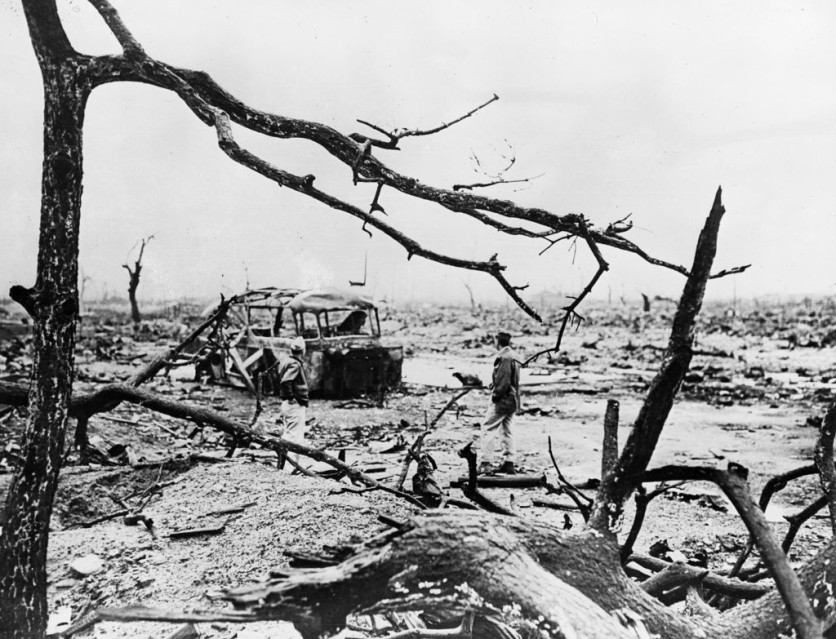The lingering shadows etched into the infrastructure of Hiroshima serve as mysterious reminders of the catastrophic events that unfolded on August 6, 1945, when the city fell victim to the devastating impact of an atomic bomb.
Despite decades passing since the tragedy, these "shadows" continue to perplex many, prompting questions about their origin and what they really are. However, experts have some explanations about their true nature, unlocking the mysteries that shroud these haunting imprints.
Deciphering the Shadows: A Glimpse into History

The aftermath of the atomic bomb dropped on Hiroshima revealed a scene of devastation, captured vividly in eerie before-and-after photographs.
Among the spooky remnants were the peculiar shadows that adorned the remains of the city's infrastructure. These shadows, depicting the outlines of human beings, bicycles, and various objects, left an indelible mark on the landscape, serving as silent witnesses to the horrors of that fateful day.
Misconceptions Dispelled: Unveiling the Truth
Contrary to popular belief, these bizarre shadows were not the result of instantaneous vaporization, as commonly assumed. Expert analysis has debunked this misconception, citing the immense energy required for such a phenomenon to occur. Instead, the shadows were cast by the atomic energy that swept through Hiroshima, encountering objects in its path.
As the energy was absorbed by these objects, the surrounding areas were bleached, creating shadow-like impressions that endure as poignant reminders of the tragedy.
A Symbol of Tragedy and Resilience
Among the saddest displays of these shadows is the Human Shadow Etched in Stone exhibit at the Hiroshima Peace Memorial Museum. This haunting silhouette is believed to depict the final resting place of an anonymous individual who perished in the blast.
Despite their anonymity, these shadows serve as symbols of the countless lives lost and the enduring resilience of the human spirit in the face of unimaginable adversity.
Auctioning Memories: Preserving History
In a tribute to the events of that fateful day, a watch frozen in time at the moment of the Hiroshima bombing was recently auctioned for over $31,000. This artifact, bearing witness to one of the darkest chapters in human history, serves as a tangible link to the past, ensuring that the memories of Hiroshima endure for generations to come.
The shadows left behind at Hiroshima stand as solemn reminders of the catastrophic consequences of nuclear warfare. While they may fade with time, their significance remains drawn in the annals of history, serving as enduring symbols of remembrance and resilience in the face of tragedy.
Aside from these shadows, the Hiroshima atomic bombing also exposed a weird survivor of the tragedy. It's not a person or an animal, but a nearly 400-year-old bonsai tree.
The Japanese white pine bonsai which endured years of survival is now displayed in the museum courtyard for viewing.


![Apple Watch Series 10 [GPS 42mm]](https://d.techtimes.com/en/full/453899/apple-watch-series-10-gps-42mm.jpg?w=184&h=103&f=9fb3c2ea2db928c663d1d2eadbcb3e52)


